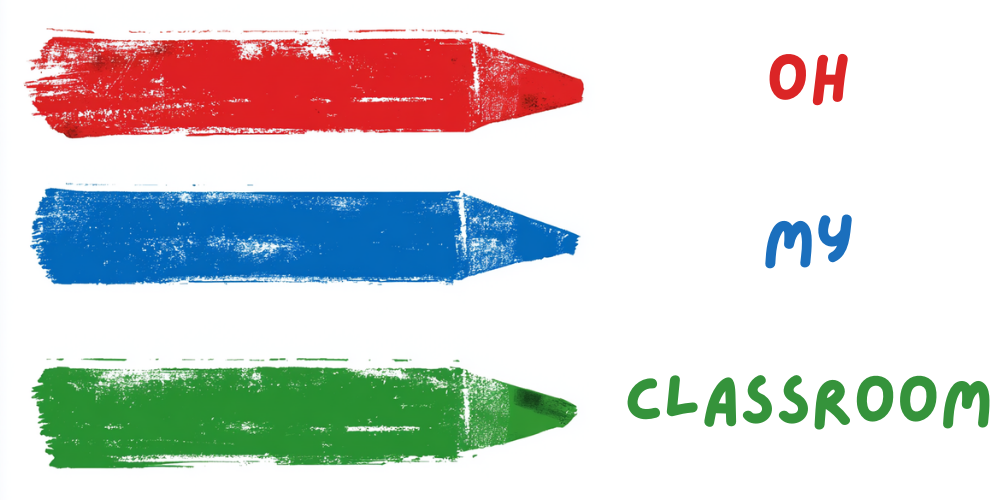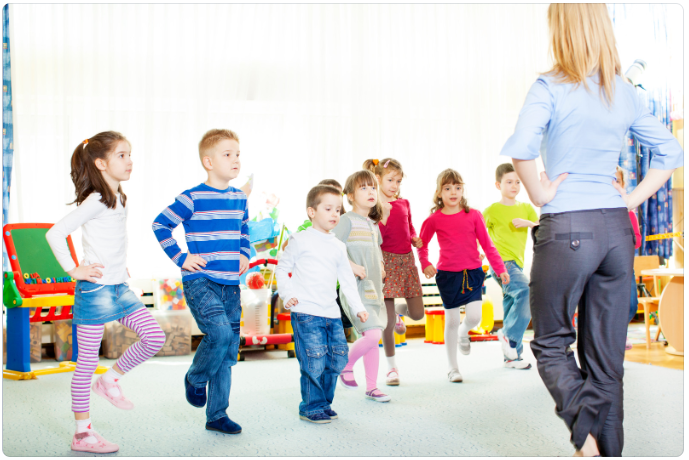Positional words, also known as prepositions, are essential for understanding spatial relationships and giving directions.
Teaching positional words to children can be both educational and entertaining.
By incorporating fun activities into your lessons, you can make learning about positional words an enjoyable experience.
Get ready to embark on a journey of creativity and exploration as we delve into positional words activities that will leave children eager to learn and play!
Activity 1: “Positional Word Scavenger Hunt”
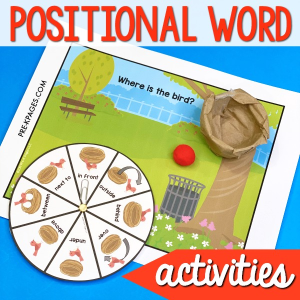
Transform learning positional words into an adventurous scavenger hunt! Create a list of positional words such as under, behind, between, and above. Give each child a copy of the list and let them explore their surroundings to find objects that match each positional word. For example, they might find a book under the table, a toy behind the couch, or a pencil between two books. Encourage children to use positional words as they locate and describe the objects. This activity not only enhances their understanding of positional words but also sharpens their observation skills and critical thinking abilities.
Activity 2: “Simon Says: Positional Edition”

Put a positional twist on the classic game of Simon Says! Designate one child as the “Simon” and have them give positional instructions such as “Simon says touch your toes” or “Simon says stand beside a chair.” The other children must follow the instructions only when “Simon says” is included. This game allows children to physically experience different positions while reinforcing their understanding of positional words. It’s a playful and engaging way to develop listening skills and promote active participation.
Activity 3: “Build a Positional Word Obstacle Course”

Create an exciting obstacle course that incorporates positional words! Use pillows, hula hoops, cones, and other objects to set up various stations. Each station should require children to navigate through or around objects using positional words. For example, they might crawl through a tunnel, jump over a hurdle, or walk around a chair. As children complete the course, encourage them to describe their movements using positional words. This hands-on activity combines physical exercise, problem-solving, and positional word recognition in a dynamic and enjoyable way.
Related: 20 Fun Fraction Activities for Preschool Kids
Activity 4: “Positional Word Puzzles”
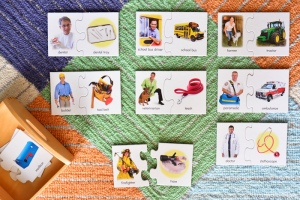
Engage children’s cognitive skills with positional word puzzles. Create a set of puzzles by drawing or printing images that depict different positions, such as a ball inside a box, a bird on a branch, or a car under a bridge. Cut each image into pieces and mix them up. Provide the puzzle pieces to the children and challenge them to assemble each picture correctly by paying attention to the positional clues. This activity fosters visual-spatial awareness, critical thinking, and fine motor skills while reinforcing positional word vocabulary.
Activity 5: “Positional Word Storytelling”

Encourage children’s creativity and language development through positional word storytelling. Begin by selecting a series of images or picture cards that depict various scenes involving positional relationships. Show one image at a time and ask children to create a story that incorporates positional words based on what they see. Encourage them to use descriptive language and include as many positional words as possible. This activity not only enhances their understanding of positional words but also promotes storytelling skills, imagination, and verbal expression.
Activity 6: “Positional Word Sensory Bin”
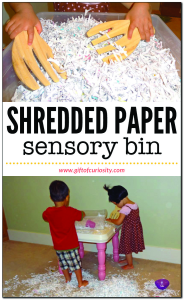
Create a sensory bin filled with various materials like rice, sand, or shredded paper. Hide small objects or toys within the bin. Introduce positional words such as buried, on top of, or beneath. Encourage children to search for hidden items using their hands or tools like tweezers. As they discover the objects, ask them to describe their position in relation to the sensory bin using the positional words. This activity not only engages children’s senses but also strengthens their understanding of positional concepts.
Related: 20 Best Things to Make With PlayDough for Kids
Activity 7: “Positional Word Body Movement”

Turn positional words into a dynamic body movement game! Call out different positional words such as jump up, crouch down, or reach behind. Children must perform the corresponding action in response to each instruction. You can make it more challenging by combining multiple positional words into one instruction, like spin around and clap above your head. This activity promotes physical activity, and coordination, and reinforces the connection between positional words and body movements.
Activity 8: “Positional Word Puzzle Hunt”

Create a series of jigsaw puzzles with images representing different positions. Cut each puzzle into several pieces and hide them around the room or outdoor area. Provide children with clues using positional words to guide them to the puzzle pieces. For instance, you could say, “Look for the puzzle piece that is on top of a table” or “Find the puzzle piece that is inside a box.” Children must search for the puzzle pieces and assemble them correctly to reveal the complete image. This activity combines problem-solving, positional word recognition, and puzzle-solving skills.
Activity 9: “Positional Word Sorting”
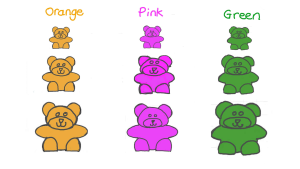
Prepare a collection of objects with different shapes and sizes. Set up sorting stations labeled with positional words such as above, below, beside, and inside. Children must categorize the objects based on their positional relationships and place them in the correct sorting station. For example, a small toy car can be placed in the “below” station, while a stuffed animal can be placed in the “beside” station. This activity reinforces positional word vocabulary and strengthens children’s categorization and sorting abilities.
Activity 10: “Positional Word Art Collage”
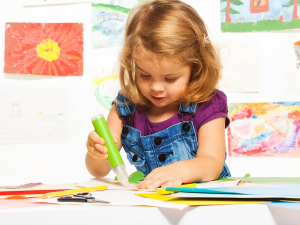
Engage children’s artistic abilities while exploring positional words through an art collage activity. Provide them with a variety of art materials, including colored paper, scissors, glue, and magazines. Ask them to create a collage that represents different positions using the materials provided. For example, they can cut out pictures of objects from magazines and arrange them to show positions like on top of, inside, or next to. Encourage children to label their artwork with the corresponding positional words. This activity encourages creativity, and fine motor skills, and reinforces positional word vocabulary in a visually expressive way.
Activity 11: “Positional Word Puppet Show”
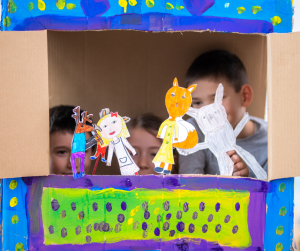
Bring positional words to life by organizing a puppet show! Provide children with puppets or help them create their own using craft materials. Prepare a script that incorporates various positional words and assign roles to the children. As they perform the puppet show, encourage them to use positional words to describe the movements and interactions between the puppets. This activity promotes creativity, and storytelling skills, and reinforces positional word vocabulary in an entertaining and interactive way.
Activity 12: “Positional Word Building Blocks”

Utilize building blocks or LEGO bricks to create a positional word construction activity. Set up a designated area with different structures and objects made from blocks. Give children a set of positional word cards and challenge them to recreate the structures according to the positional instructions. For instance, they may need to build a tower on top of a green base or place a red block between two blue blocks. This hands-on activity strengthens spatial awareness, and problem-solving abilities, and reinforces positional word comprehension.
Activity 13: “Positional Word Nature Walk”
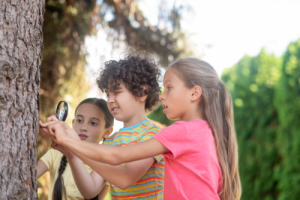
Take learning outdoors with a nature walk that focuses on positional words. Explore a park or nature trail with children and encourage them to identify and describe positional relationships they observe in the environment. For example, they may find a squirrel up in a tree or a rock beside a stream. As they make these discoveries, prompt them to use positional words to express their findings. This activity combines outdoor exploration, and observation skills, and reinforces positional word vocabulary in a real-world context.
Activity 14: “Positional Word Memory Game”
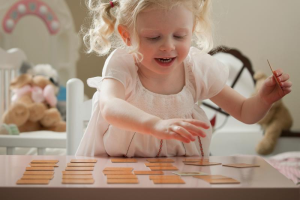
Create a positional word memory game using index cards or small flashcards. Write or draw different positional words on pairs of cards and lay them face down on a table. Children take turns flipping two cards at a time, trying to match the positional word pairs. When a match is made, they must use the positional word in a sentence or describe a corresponding position. This memory game enhances memory skills, and vocabulary retention, and strengthens the association between positional words and their meanings.
Activity 15: “Positional Word Treasure Map”
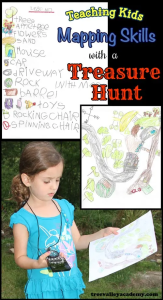
Embark on an exciting treasure hunt using a positional word treasure map. Create a map that includes various landmarks or objects placed in different positions, such as a tree near a pond or a treasure chest hidden under a bridge. Give children the map and clues that describe the positions of the objects. They must follow the clues and navigate the map to find the treasure using their understanding of positional words. This activity promotes problem-solving, critical thinking, and spatial reasoning skills.
Activity 16: “Positional Word Charades”
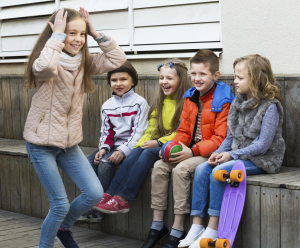
Engage children in a lively game of charades that focuses on positional words. Write down different positional words on small pieces of paper and place them in a bowl or hat. One child selects a word and acts out the corresponding position without using any words. The other children must guess the positional word being depicted. This activity encourages creativity, and body language interpretation, and reinforces positional word vocabulary in a playful and interactive manner.
Activity 17: “Positional Word Follow the Leader”
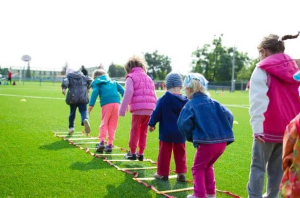
Play a game of “Follow the Leader” with a positional word twist. Designate one child as the leader and have them move around the space, performing various positional movements. For example, they may walk around a chair, jump over a pillow, or crawl under a table. The other children must closely observe the leader and imitate their movements, following the positional instructions. Rotate the leader role so that each child has a chance to lead and follow the positional movements. This activity promotes active listening, and coordination, and reinforces positional word comprehension through physical play.
Activity 18: “Positional Word Yoga”
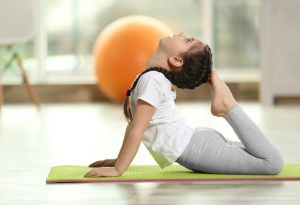
Combine positional words with the benefits of yoga by creating a positional word yoga sequence. Choose a set of yoga poses that represent different positions, such as downward dog, child’s pose, and tree pose. Guide children through the yoga sequence, using the corresponding positional words to describe each pose. Encourage children to focus on their body positioning and the spatial relationships between different body parts. This activity promotes physical activity, mindfulness, and body awareness, and reinforces positional word vocabulary.
Activity 19: “Positional Word Song and Dance”
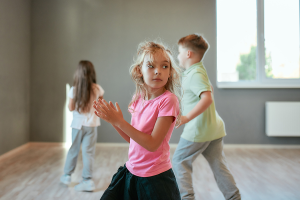
Get children moving and grooving with a positional word song and dance activity. Create a catchy song that incorporates positional words and teach the children the lyrics and dance moves that correspond to each position. For example, they might hop up and down, spin around, or reach up to the sky. Practice the song and dance routine together, emphasizing the use of positional words throughout. This activity combines music, movement, and rhythm, and reinforces positional word vocabulary in an entertaining and memorable way.
Activity 20: “Positional Word Building Challenge”
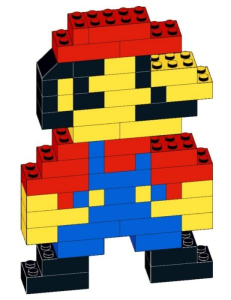
Challenge children to a building activity that requires them to follow positional instructions. Provide them with a set of building materials, such as blocks, LEGO bricks, or even household items like cups or cardboard boxes. Give them a series of positional instructions to follow, such as “Build a tower on top of a square base” or “Place a cylinder inside a cube.” Children must interpret the positional instructions and construct their structures accordingly. This activity enhances spatial reasoning, and problem-solving skills, and reinforces positional word vocabulary.
